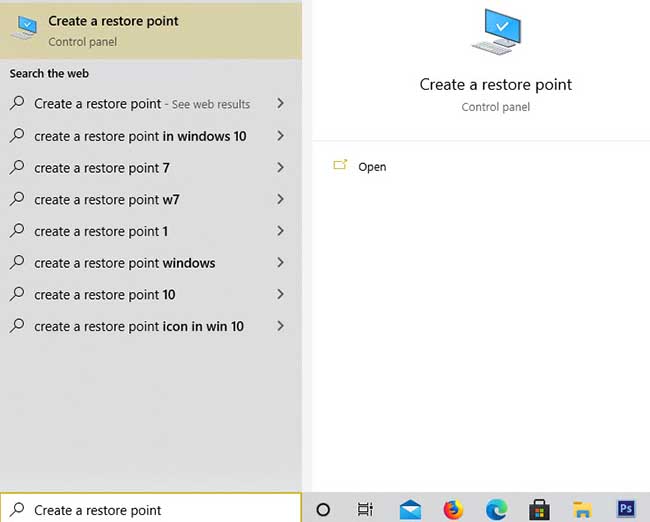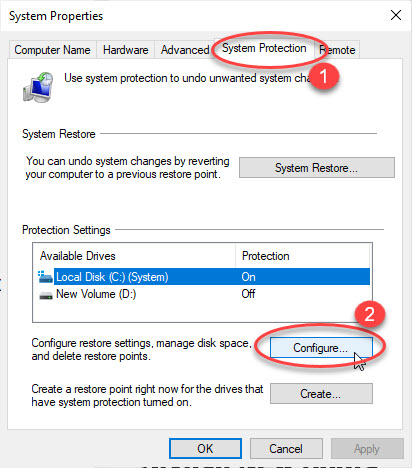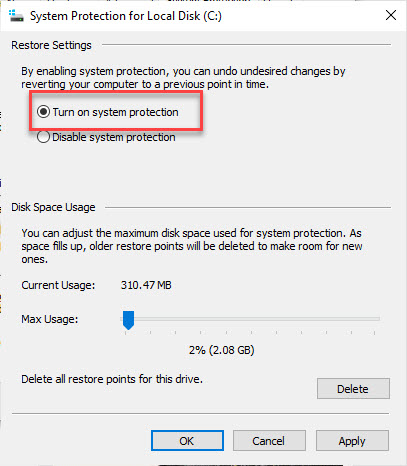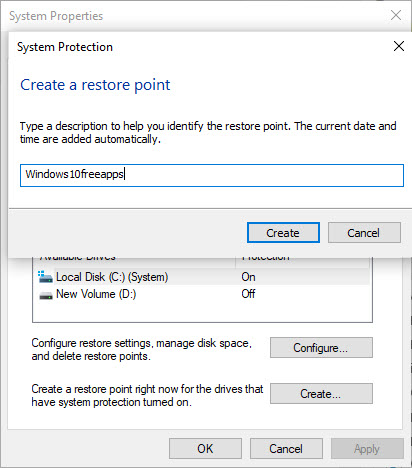System Restore is a feature in Microsoft Windows that allows the user to revert their computer’s state to that of a previous point in time, which can be used to recover from system malfunctions or other problems. So if something goes awry with your system and you need to get it working again, we would recommend you use System Restore. And in this tutorial, we are gonna show you how to enable and create a System Restore Point in Windows 10. In addition, you can also learn how to use it on Windows 10.
At this time, the simplest method to get to the System Restore / System Protection section is by clicking on the Windows Key and searching for “Create a restore point“. Then select Create a restore point from the list of results.

Once the menu for the System Properties menu opens, go to System Protection, select the drive with your System portion (normally C:) and click on the Configure button.

System Restore is disabled by default, you may need to turn on the System Restore utility. Select the Turn on system protection option. From here you can also adjust the maximum disk space used for system protection. If you have a smaller drive, you should to turn it down a bit. Click Apply > OK to save changes.

Now that you have everything set up, press on the Create button and follow the onscreen wizard to create a restore point. In the box under the Create a restore point section, enter a name for this backup copy. After you gave a name to the restore point, click on the Create button.

Finally, your Windows 10 system will start creating the restore point. After the process is completed, you will get a pop-up message which will say you that the restore point was successfully created.
Now if you have any problems with your Windows 10 operating system, you can just go right ahead and bring it back to the restore point you just made in this post.
That’s about it.





![How to Configure Proxy Settings on Android Devices [FREE] How to Configure Proxy Settings on Android Devices [FREE]](https://windows10freeapps.com/wp-content/uploads/2024/12/setting-up-a-proxy-for-a-wi-fi-network-1-150x150.jpeg)
